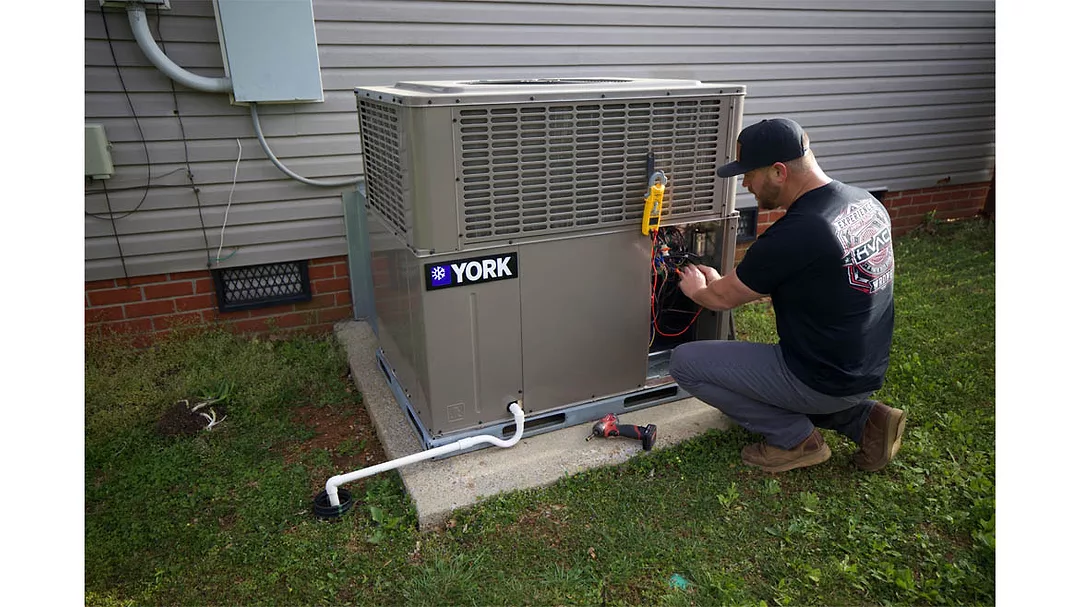America’s buildings are aging. The average commercial building is roughly 53 years old, and the average home isn’t far behind at 46 years old.
This outdated infrastructure presents an opportunity to not only remodel for aesthetic benefits, but also enhance building performance through increased energy efficiency and reduce operational costs.
When approaching both residential and commercial remodels, HVAC plays a critical role that cannot be overlooked. Communicating the value and necessity of coupling an HVAC system upgrade with a renovation project requires an understanding of today’s construction market, occupant demands, regulations and system advancements.
Residential Renovations
Inflation and rising mortgage rates have slowed the demand for home remodeling – the Joint Center’s Leading Indicator of Remodeling Activity anticipates that it could be as much as a 7% loss by mid-2023.
While this may sound like a dwindling opportunity, the demand for renovations that can net long-term cost savings remains.
With heating and cooling accounting for the largest portion of most homes’ utility expenses, many homeowners view an HVAC upgrade as a path to long-term savings.
In fact, the 2022 American Home Comfort Study revealed that 60% of homeowners were willing to invest in high-efficiency HVAC systems if they could lower their energy bills by just 25%. Evaluating the home comfort system as part of a residential remodel is an opportunity to help homeowners find a solution to this growing problem.
For example, variable capacity electric heat pump systems can save homeowners as much as 50% on energy bills compared to lower-SEER models.
Pairing the system with a communicating zoning system can further enhance energy efficiency by enabling individual temperature settings by room or zone. While older zoning configurations relied heavily on duct work, today’s communicating zoning systems are designed to simplify installation using built-in, digital airflow testing and damper settings, and some have even eliminated the need for a bypass damper.
Historically, HVAC system replacement has primarily been driven by equipment breakdowns.
Approaching the subject from a remodeling mindset, however, with the intention of understanding the homeowners’ goals and lifestyles can increase opportunities for system upgrades designed to meet these objectives.
Current federal incentive programs, including the High-Efficiency Electric Home Rebate Act and the Inflation Reduction Act, make purchasing energy-efficient appliances, such as electric heat pumps, more obtainable than ever before. Understanding and communicating these benefits can help to establish a value proposition to support incorporating HVAC as part of the home renovation process.
Commercial Reconstruction
While the home renovation market is expected to soften in 2023, nonresidential remodeling is poised for a rebound.
The American Institute of Architects reported significant growth in reconstruction projects during 2022, with outcomes reaching a 20-year high. Of those projects, hotels, educational institutions and office buildings are anticipated to experience the strongest growth.
A rapidly growing industry focus on decarbonization and sustainability is among the factors driving the segment.
Adaptive reuse and building retrofitting provide an opportunity to reimagine and modernize aging buildings while accumulating a lower-embodied carbon footprint compared to new construction methods.
However, in retrofitting scenarios, HVAC upgrades are often matched to the old system in an attempt to reuse existing components. Although a common practice, taking this approach is not always the most strategic option when factors such as energy efficiency, occupant well-being and reduced operational costs are priorities.
To achieve top-tier building performance standards, HVAC must be an integrated part of the construction plan.
Incorporating HVAC into building reconstruction requires an understanding of building size, configuration, usage, indoor air quality requirements and sustainability goals. Each of these factors will influence equipment selection and must be evaluated by the HVAC contractor to ensure optimal performance can be achieved.
Although each project must be evaluated individually, some HVAC equipment has been engineered to simplify the retrofitting process. Packaged rooftop units provide a flexible option for building remodels. The exterior placement eliminates the need to reserve interior square footage. And advanced models can be configured to reduce operational costs, improve energy efficiency and support healthy IAQ.
Performance can be further optimized when coupled with smart building controls.
Advanced controls use a suite of sensors to optimize and regulate functions such as temperature, ventilation, free-cooling and humidity in response to preset building standards, real-time occupancy and environmental conditions. Incorporating this technology is a powerful way to increase efficiency and prolong the life span of the HVAC system.
Regardless of the system selected, incorporating HVAC early in the building remodel and establishing a collaborative relationship between architects, builders and HVAC contractors can help to avoid unnecessary project interruptions and achieve optimal building performance outcomes.
Considerations For Success
In both residential and commercial building remodels, it’s important to consider how renovations will impact HVAC requirements.
Structural changes, added square footage, building usage and changes to occupancy rates can impact airflow, ventilation and overall HVAC system performance. Failing to adjust for these changes could result in increased operational costs, decreased energy efficiency and premature system wear and tear.
Today’s HVAC systems are engineered to help both homeowners and building managers achieve their energy efficiency goals while creating a comfortable and healthy indoor environment. Incorporating digital solutions such as building controls and advanced smart home automation can further enhance these benefits.
Jason Carter is senior product manager, ducted systems and Mark Reding is product manager, ducted systems, Johnson Controls Inc..




